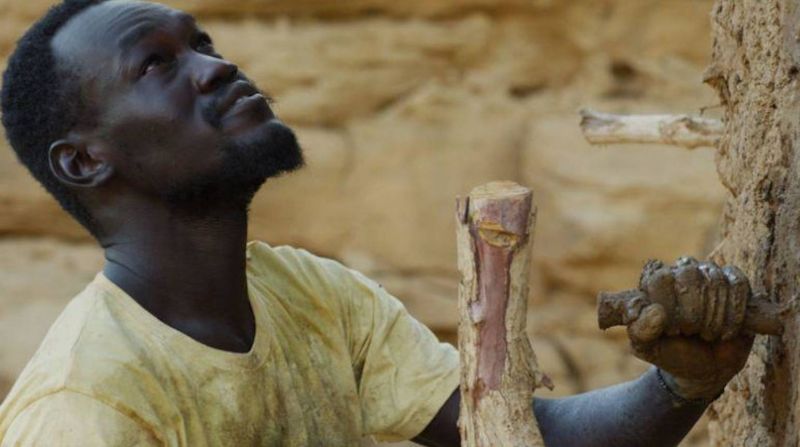
Maher El Khair in a still from Ali Cherri’s feature ‘The Dam.’ (Credit: Bassem Fayad, courtesy Kinoelectron)
BEIRUT — The closing credits of Ali Cherri’s debut feature The Dam inform the public that no animals were harmed during the film’s production.
“I put it as a joke,” the writer-director explains, but the reassurance wasn’t enough to convince several North American festivals to program Cherri’s film.
“You’re laughing,” he tells L’Orient Today from his studio in Paris, but … it’s not just one festival. San Francisco sent us an email, like, ‘Although we really liked the film, our audience is too sensitive for animal killing, so we cannot show it.’ Others said the same.”
Cherri notes that none of these festivals expressed such concerns about the film’s human characters.
The Dam is Cherri’s first feature film but he is well-known in contemporary art circles. He has worked extensively in multiple disciplines over the years — video and photography as well as performance and sculptural objects. Recently, his Instagram feed has blossomed with mud sculptures. “Of Men and Gods and Mud,” Cherri’s mixed-media installation won him the Silver Lion for promising artist at the 2022 Venice Bienniale.
The Dam premiered in 2022 during Cannes’ Directors’ Fortnight (Quinzaine) and cut a swathe through several other (mostly non-North American) events — winning Cherri Best Artistic Achievement prize at the Thessaloniki International Film Festival, while the Cairo International Film Festival awarded his lead actor, Maher El Khair, its Best Actor award. The film’s theatrical run started in France in early March. It will come “home” later this month, with an expansive week-long run at two Beirut-area cinemas.
The story
Set along a stretch of the Nile wending through Sudan, in an open-air brick-making factory and the adjacent desert, The Dam follows the story of Maher (Khair) who, with a dozen or so other migrant laborers, devotes his days to the repetitive toil of making mud bricks.
A taciturn fellow, Maher doesn’t socialize much with the other laborers. Whenever the camp’s long-suffering dog wanders up to him in search of a bite to eat or a scratch behind the ears, the protagonist tells him to get lost. After work he walks into town, where he borrows a friend’s motorcycle, drives to a desert ravine and works on a mud structure of his own.
Interspersed through his daily routine are reports of life beyond the factory — mobile telephone calls with family and disembodied snippets of radio and online news broadcasts recounting the political unrest that presaged the army coup that overthrew former Sudanese president Omar al-Bashir in 2019.
Maher is amiable but reticent. As Cherri's film follows the contours of his routine — days of tedious labor beneath unremitting blue skies bleeding into his obsessive after-hours exertions — viewers are left with little sense of what he’s erecting in the desert or why. Clearly the laborer is troubled, something related to a worsening lesion on his back. The wound seems to be reiterated in Maher’s desert building project, which begins to take on a life of its own.
The energetic rainy season comes to put an end to Sudan’s dry season, and anything else made of water and sand. Maher’s mood darkens abruptly and his behavior even more so.
Revolution, COVID, neorealism
The Dam project dates back to 2017. He was curious about Sudan’s Merowe Dam project, inaugurated in 2009 — which, along with Egypt’s Aswan High Dam (opened in 1970) and Ethiopia’s Grand Renaissance Dam (opened in 2020), is one of the Nile’s three major hydroelectric projects. Cherri first arrived at the Merowe site in 2017.
“I knew I wanted to work around the question of water, in all its dimensions — myths around the Nile but also the geopolitics of water, and how the next wars in the region are going to be about access to water.”
The Merowe project had a violent implementation.
“People refused to leave their villages during the dam’s construction,” he says. “To force them to leave, the government dammed the whole area while people were still there. Al-Jazeera has good reportage of this. You see, water rising in people’s houses and they barely had time to save a few possessions and flee. They refused to settle where the government wanted to send them, though they had built settlements or villages for them. Most of the displaced people are now living in improvised settlements around the lake. This is very dangerous because of the yearly inundation.”
Cherri’s ideas gelled into a film when he visited a traditional brickyard and spoke to the workers there.
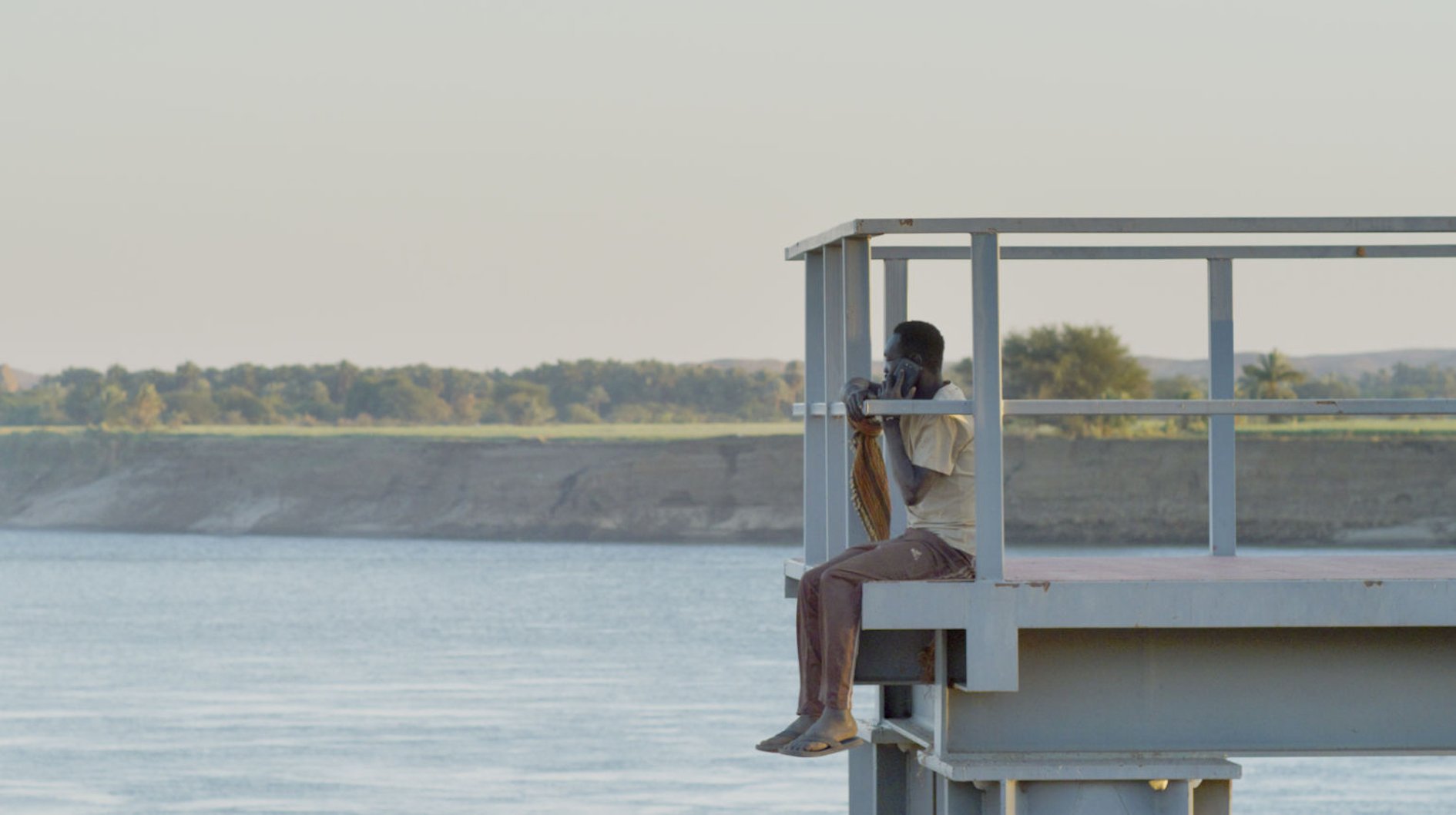 A still from Ali Cherri’s feature ‘The Dam.’ (Credit: Bassem Fayad, courtesy Kinoelectron)
A still from Ali Cherri’s feature ‘The Dam.’ (Credit: Bassem Fayad, courtesy Kinoelectron)
“The moment I walked in, I knew that was the film,” he recalls. “The whole materiality of the process — the fabrication of the bricks, the mix of earth and water — it seemed like the perfect place to start. I decided to work with the brickyard workers as actors.”
The process of making The Dam has strong echoes of the neorealist practices that have been so influential to decades of filmmakers in this region.
“I wrote the film after this first trip based on interviews with the workers,” he says. “I filmed them and their work in the brickyard, but it’s not a ‘documentary.’ It’s a fiction film anchored in reality.
“I think I wrote the film with Maher in mind. He seemed really very responsive to the adventure of making the film. The character is a lot like Maher in real life. He doesn’t talk much. I knew what he could do potentially and what he could not do. I couldn’t ask him to do a five-minute monologue about, like, life, but he has a real intensity in his gaze, an interesting on screen presence.”
All the actors play versions of themselves. The brick factory boss is, in fact, the boss. The nurse is the site’s nurse. All the locations are authentic. “It’s just the story that’s fictional,” Cherri says. “I was interested in this tension between fiction and reality.”
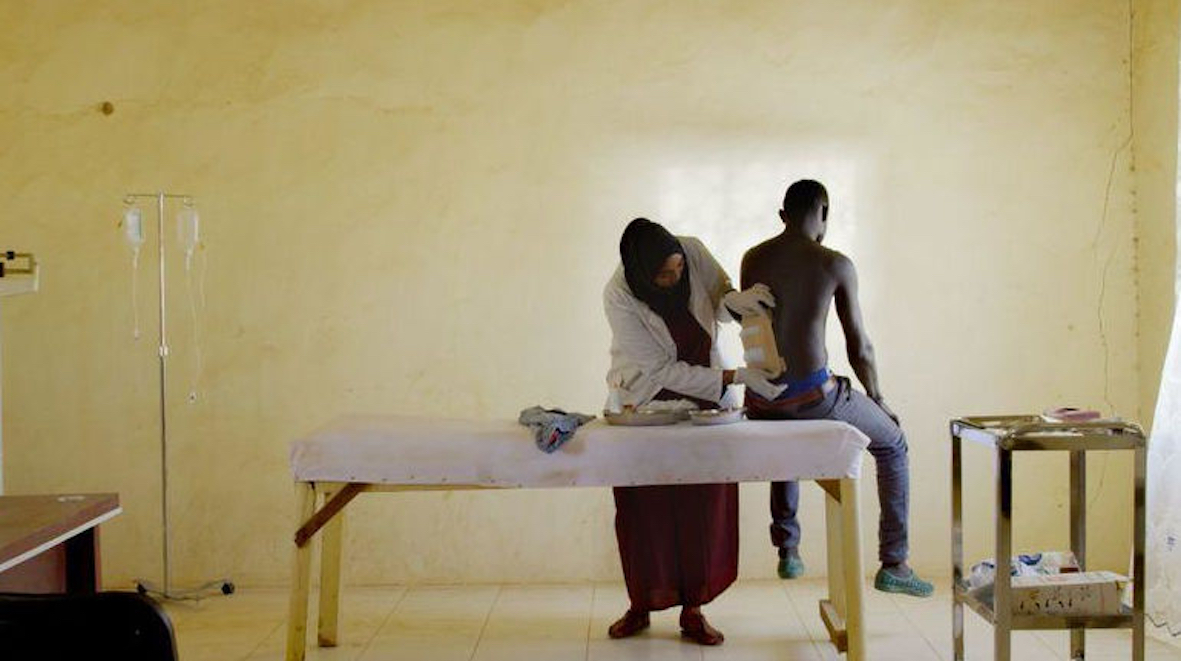 Maher El Khair in a still from Ali Cherri’s feature ‘The Dam.’ (Credit: Bassem Fayad, courtesy Kinoelectron)
Maher El Khair in a still from Ali Cherri’s feature ‘The Dam.’ (Credit: Bassem Fayad, courtesy Kinoelectron)
The shoot started in 2019 just as the Sudanese revolution started with the first demonstrations in Khartoum and other urban centers. After ten days of shooting, the coup d’etat happened and Omar al-Bashir was arrested, forcing the crew to depart.
“I rewrote the script,” Cherri recalls, “and continued developing the scenario. We planned to go back in 2020, but in March 2020 COVID happened. We went back in 2021 and re-shot everything.”
That confounding dog
The Dam follows two stories — Maher’s and that of Sudan’s revolution. Somewhere in the intersection of these narrative trajectories is the most surprising (and, it seems, troubling) part of this film — the character played by a dog named Nimr.
The hangdog canine is introduced early in the story as an integral part of the brickyard. Maher routinely orders it to go away and the first such interaction is so effective, the animal doing a quick about-face while looking over its shoulder (accentuated by a touch of whimpering growl in post-production) that the viewer may assume Nimr is the alum of Walt Disney studios.
“You know, we did [that opening] shot only twice and it was perfect both times,” Cherri chuckles. “It’s a street dog. There are no trained dogs in Sudan. He’s amazing. We shot with him in 2019 and in 2021, the same dog over two years.”
The dog is central to Maher’s unexpected character swerve in the film’s final quarter. When his monolithic mud construction is brought low by the rains, the dog (who has taken to following him to his worksite) steps up as if to console him, as dogs do.
Maher gives him some bread and the dog licks his hand. The audience begins to feel that familiar Walt Disney moment when, abruptly, a second of off-frame violence upends the tenderness.
“Maher doesn’t want the dog around, but it follows him into the desert ravine, as if discovering his secret place,” Cherri says. “There’s different ways of reading this, but for me, this dog seems to be trying to calm Maher’s revolt, his anger [expressed in his mud-building project], tempting him to accept his condition. It wants him to become docile, to soften him in a way.”
Cherri pauses. “This is an important question for me. Where does it come from, this eruption of violence, the hand that kills? Can you have an uprising, make a political change or revolution, without violence? Maher disconnects more and more from reality. During this episode of violence there’s an urge to take this anger, this literal fire that’s inside him, and achieve something better.
“This is one reading. Another is that the dog is just a projection that only he sees. Like the dream sequence when his mud construction seems to move, I don’t even know if it’s real or not.
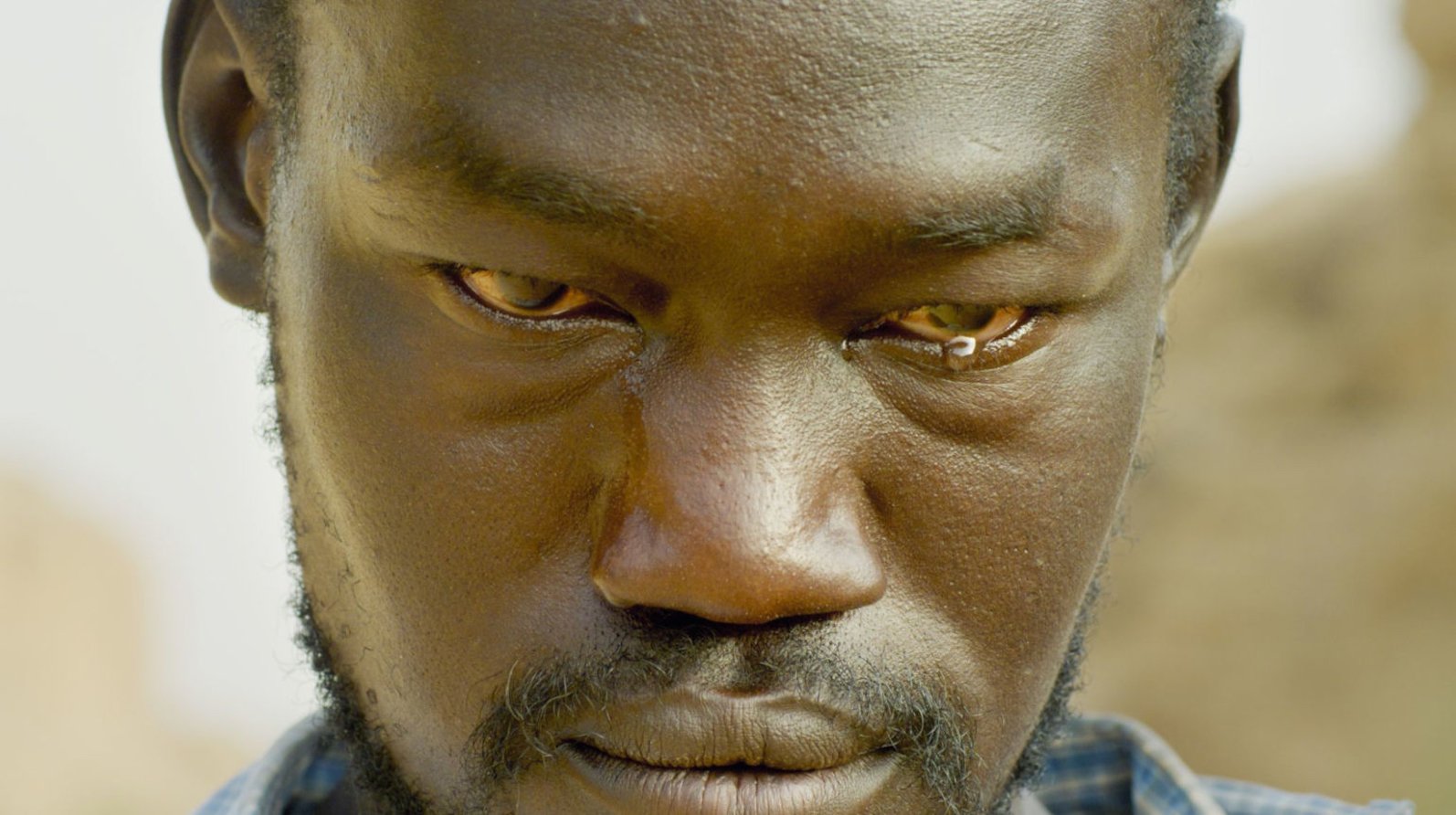 Maher El Khair in a still from Ali Cherri’s feature ‘The Dam.’ (Credit: Bassem Fayad, courtesy Kinoelectron)
Maher El Khair in a still from Ali Cherri’s feature ‘The Dam.’ (Credit: Bassem Fayad, courtesy Kinoelectron)
“If you want a political reading of the film, the key question is how can we use the power of the imagination as a tool for political change, especially in a time of revolution. All these authoritarian regimes — from Omar al-Bashir to Hafiz al Assad, whatever dictator you want — the first thing they do is take hold of the space of the imagination, so you cannot imagine a world without them. If you want to create a rupture, an end to this world that they create for you, first you have to be able to imagine another world, what kind of other words could arise. Then you can start planning a political strategy of change.
“In parentheses, I think one of the reasons Lebanon’s uprising didn’t manage to achieve anything concrete is that we were unable to imagine what other worlds could exist outside of Nabih Berri and Nasrallah. Seriously, we were not able to imagine the other alternatives.
“For me, this film is a political fable about emancipation, uprising, the possibilities of change and creating the conditions for a better world to arise.”
The Telluric Trilogy
In its subject and formal interests, The Dam is clearly a lineal descendent of Cherri’s Venice installation “Of Men and Gods and Mud.” Cherri himself regards The Dam as part of his Telluric Trilogy.
The work that became the trilogy’s first installment is The Disquiet, 2013. The 20-minute work includes a sobering statistic: “Forty-five to 60 times a day the earth shakes in Lebanon,” Cherri’s voiceover reflects. “No one feels these.”
He goes on to illustrate how the Lebanese republic was assembled upon the intersection of four different geological fault lines — the Yammouneh fault, Roum fault, Serghaya fault and Mount Lebanon fault. Each fault’s distinct history of seismic activity has resonated through history, leaving trails of destruction in its wake. The best known of these catastrophes, perhaps, is the earthquake that destroyed Roman Berytus — sending its renowned law school tumbling into the sea, never to rise again.
The Digger, 2015, takes up a story from the prehistory of the United Arab Emirates, specifically the conservation of a 5000-year-old necropolis in the desert of Sharjah. The site is comprised of excavated tombs — empty holes in the ground. The film follows Sultan Zeib Khan, one of two Pakistani guards resident on site, in his daily routine, making sure the ruins aren’t disturbed. Preserving the site’s state of ruin conforms to the modernist conception of what antiquity conservation is all about: maintaining sites that conform to the criteria of a ruin, in order to supply bait for the tourist industry.
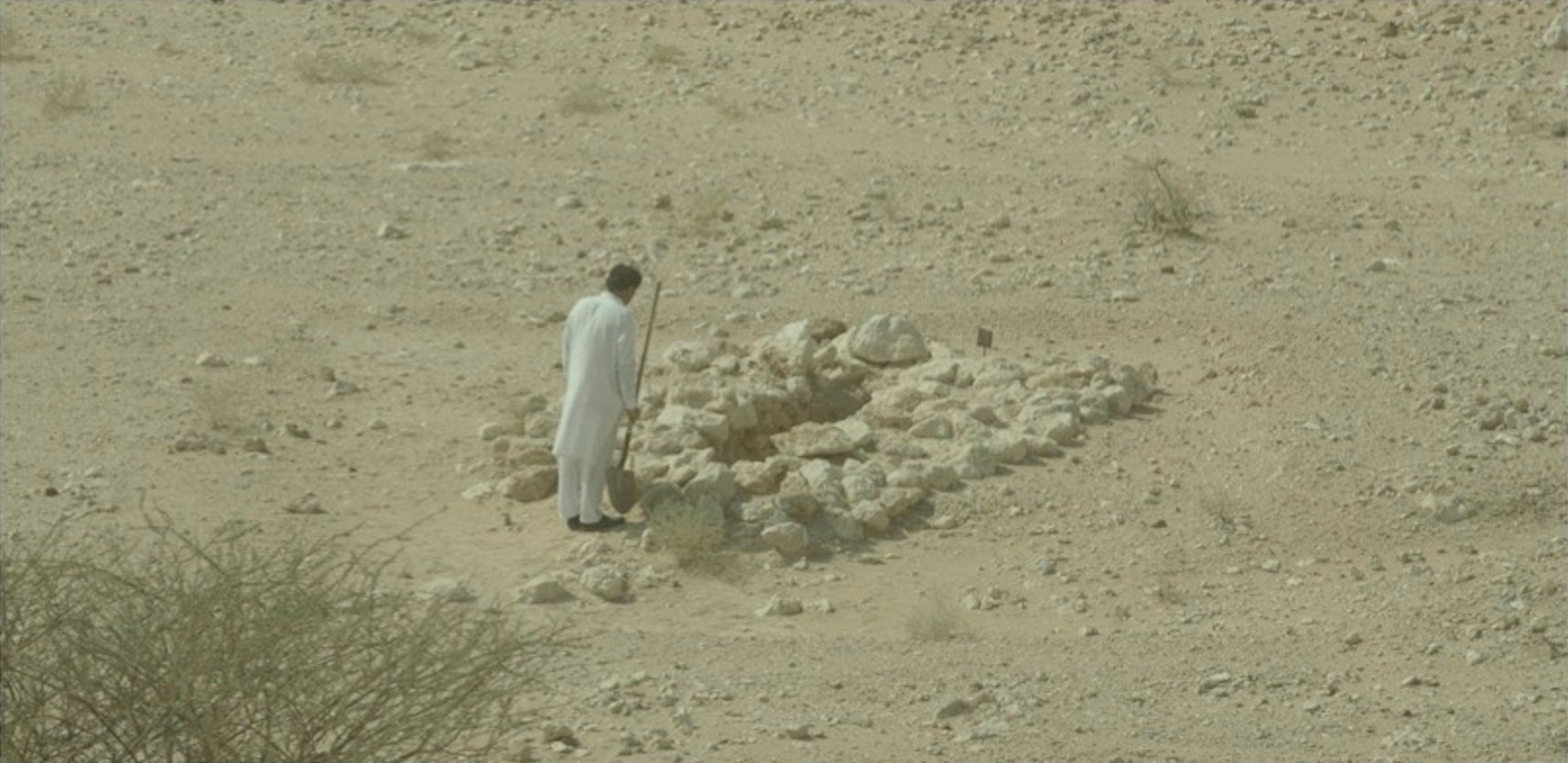 A still from Ali Cherri’s 2015 short ‘The Digger,’ the second work in his Telluric Trilogy. (Credit: Bassem Fayad, courtesy of the artist)
A still from Ali Cherri’s 2015 short ‘The Digger,’ the second work in his Telluric Trilogy. (Credit: Bassem Fayad, courtesy of the artist)
All three films of the cycle are driven by their striking imagery, captured by cinematographer Bassem Fayad. Shot to cinematic standards, The Digger plays upon several features of the desert landscape — the quiet, the relentless daytime scale of the place and the utter darkness of night. The show-stopping sequence of The Disquiet is the opening vista of a sunken island in the midst of the Beirut River, engorged with winter rain. The foliage of bush and other flora emerges from a surface that is neither blue nor brown, but red — as if the earth itself were bleeding. This isn’t post-production whimsy: Beirut river really did run red that day.
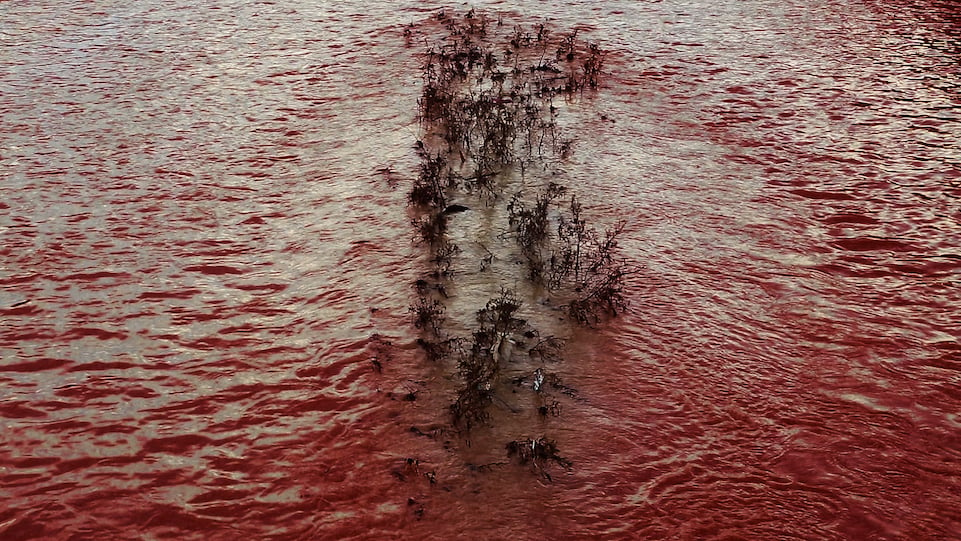 A still from Ali Cherri’s 2013 short ‘The Disquiet,’ the first work in his Telluric Trilogy. (Credit: Bassem Fayad, courtesy of the artist)
A still from Ali Cherri’s 2013 short ‘The Disquiet,’ the first work in his Telluric Trilogy. (Credit: Bassem Fayad, courtesy of the artist)
“Each film is very independent, of course” Cherri says, “but the ideas are always located in one geography. Usually It’s a geography of violence.”
Ali Cherri’s The Dam will run March 23-29 at Grand cinemas ABC Ashrafieh and VOX cinemas Hazmieh. After the opening night projection, the filmmaker will have a public conversation with Lebanese artist and writer Walid Sadek. On 18 March, Sursock museum will project the second work in Cherri’s Telluric Trilogy The Digger, followed by an artist talk with museum director Karina El Helou.
